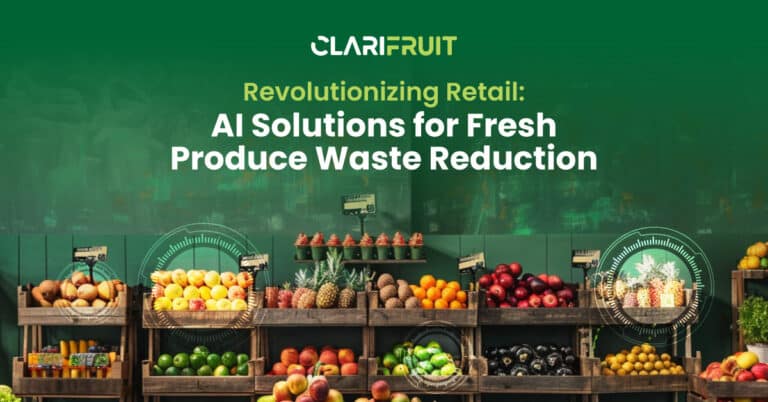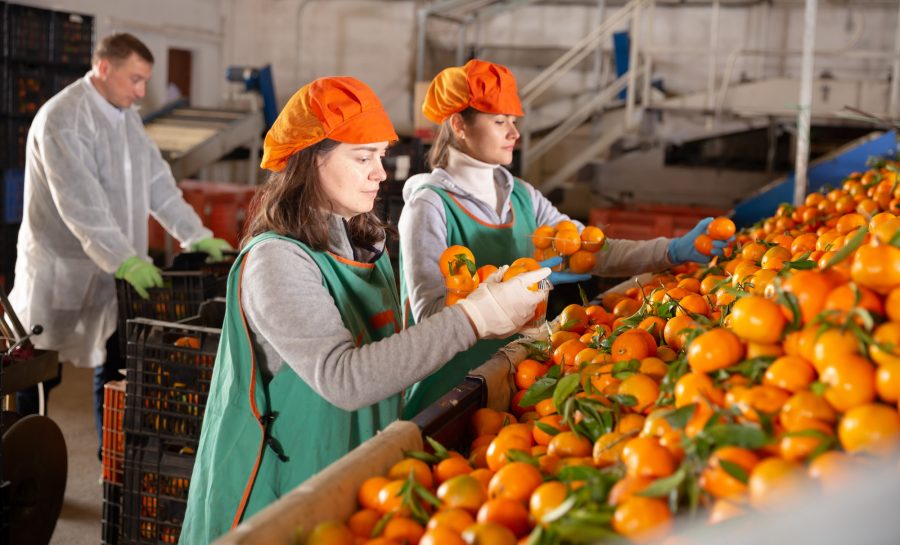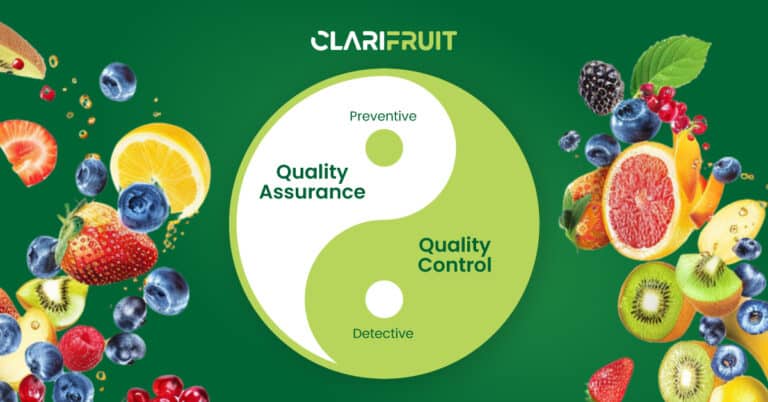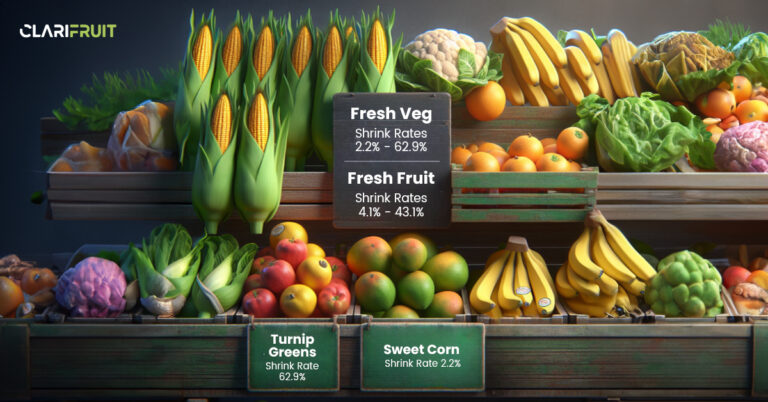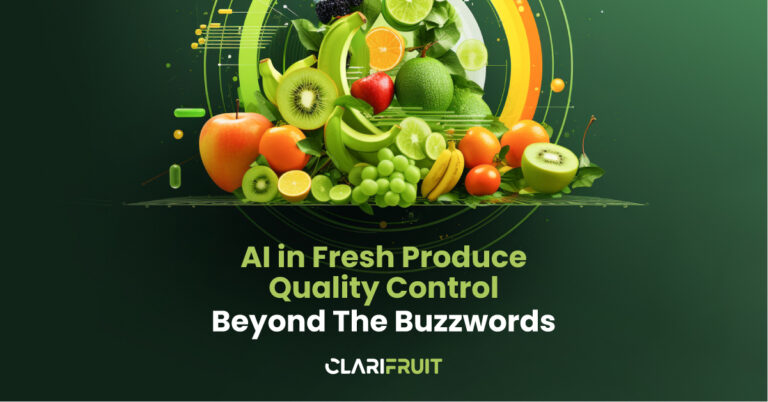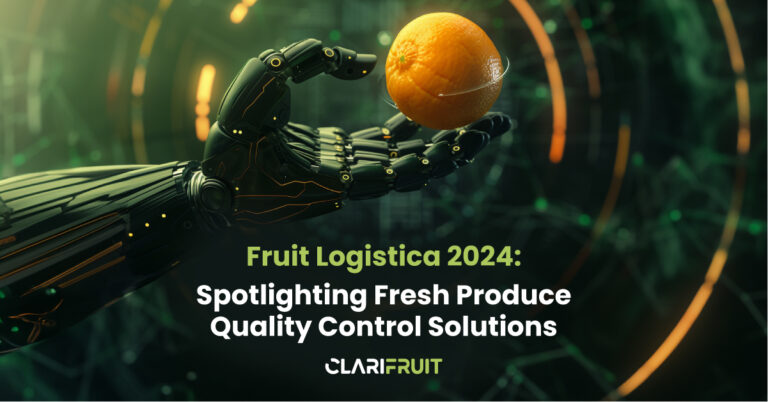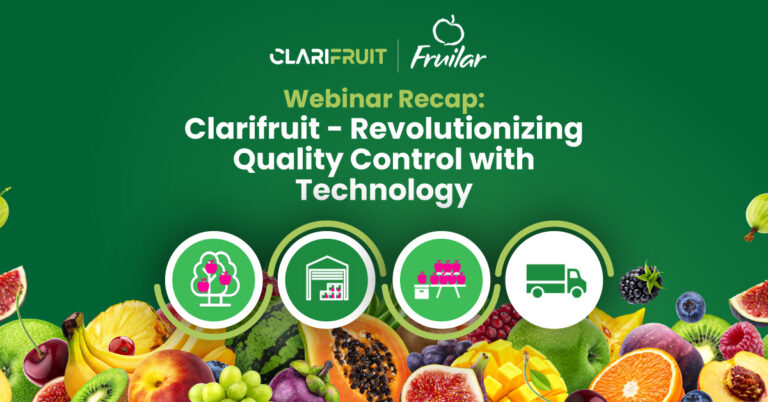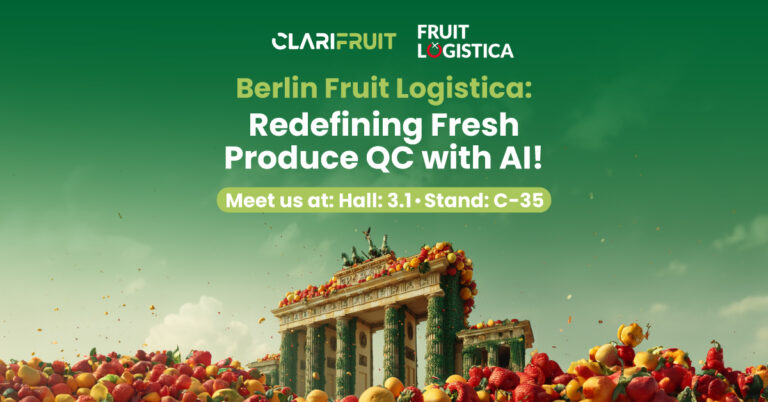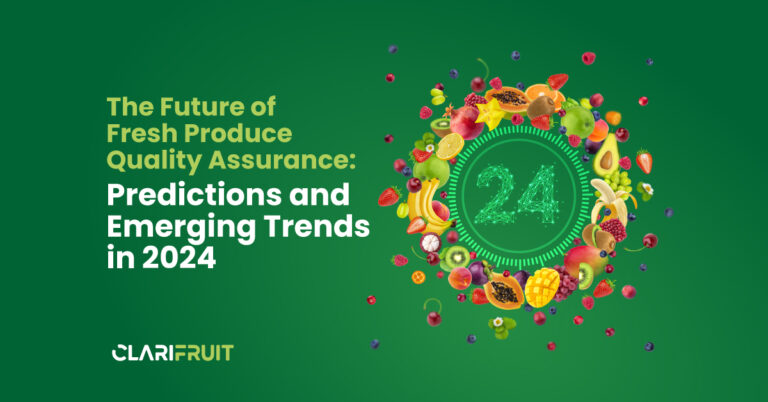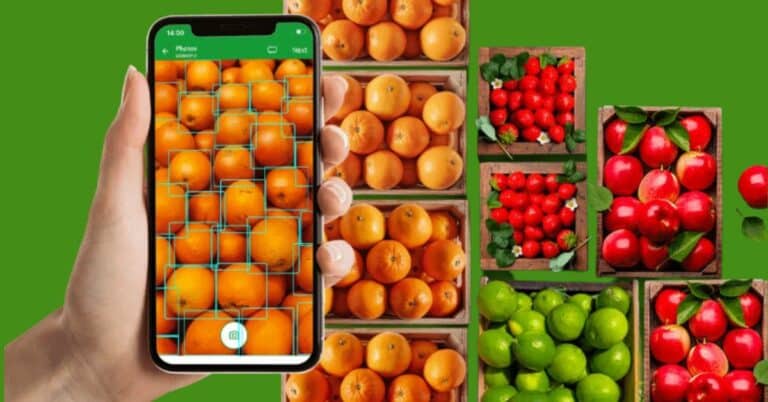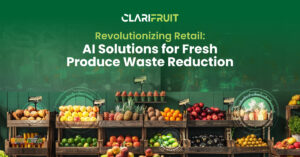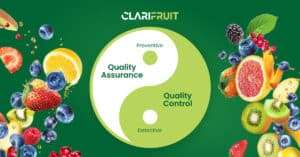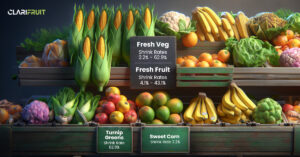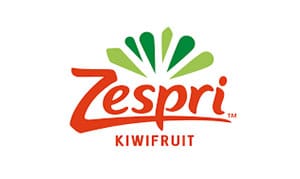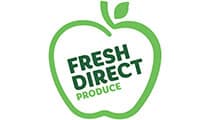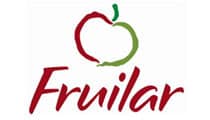As Clarifruit’s vision of a streamlined, more accurate and consistent fresh fruit and vegetable QC process takes root (no pun intended) across the value chain, many jobs will change for the better. Let’s look at the existing process for a QC manager at a wholesaler, and the changes that could make all the difference. For a grower or a marketing company, the timings and volume may vary, but the processes will be similar.
What Does a Fresh Produce Wholesaler QC Manager’s Day Look Like?
7 am: Throughout the last few hours, deliveries have been arriving at the warehouse, and are being unloaded, ready for their initial check. On any given day, there might be 5-10 loads worth of produce coming into the wholesaler, each of which could have 20 pallets onboard. At this point, QC intake starts checking the fresh fruits and vegetables, but they don’t always know who the end-customer will be.
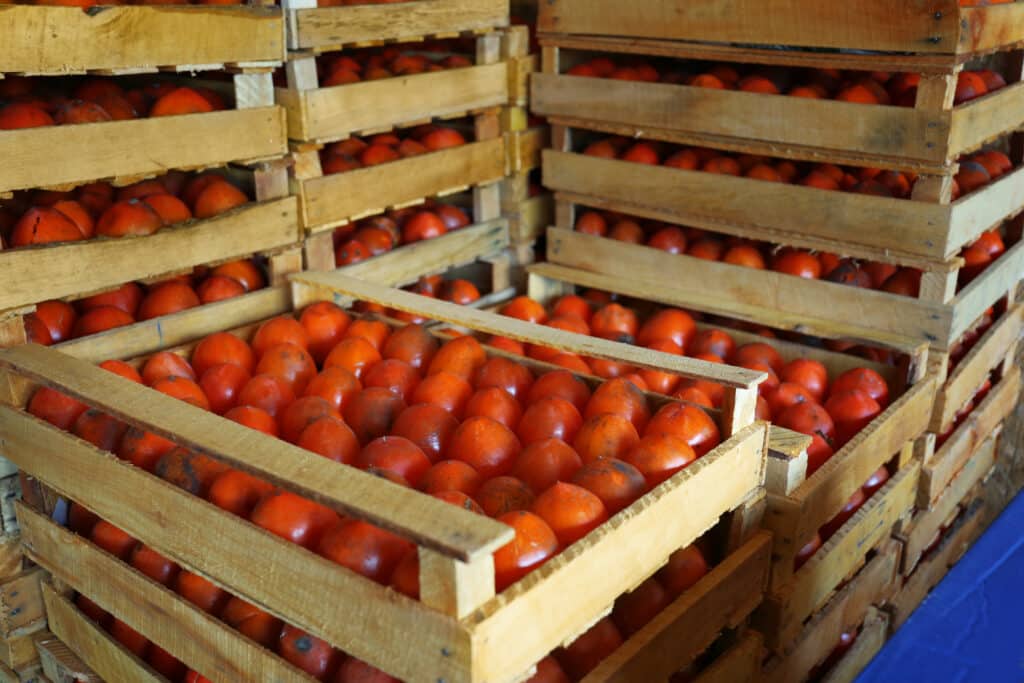
8 am: The QC manager arrives on-site, where QC intake engineers are already working on their first quality control check at the loading bay. This is done manually, using tools such as a sizer, color chart, defect chart, scale and a refractometer, requiring all QC intake staff to go through training. Before they can even start sampling, they need to manually take down the information, usually with pen and paper, before inputting the data on each load into the system, which is often an Excel file back in the office.
9 am: A single QC intake can take an hour or more, and QC intake needs to consider whether they are being impacted by their own value judgments. As each pallet is looked at in a silo, with no reference points to compare it to, if a whole consignment is lower than average, this can be hard to judge accurately.
12 pm: By midday, all the arrivals should have been inputted into the system, where they are cross-referenced with individual customer quality specs. Produce might be suitable for one customer and not another. In many cases, work might need to be done to make the fruits or vegetables suitable for a specific order, but as the QC manager, you need to make value judgements on the expense of any reworking against the profits, and provide this accurate information to the commercial team. This judgement needs to be made after sampling as little as 1% of the overall stock.
1 pm: The bays are now cleared for dispatch. At this point, QC intake is still continuing behind the scenes, so additional members of staff will need to handle the next inspections, usually QC online and QC dispatch. The loading bay now becomes a dispatch bay, and accuracy is essential. You may have 12-20 different loading bays, and each will be for a different customer, with different packaging, different specifications, and a different count per crate.
3 pm – 4 pm: The trucks start to be loaded, each with their own destination. As supermarkets and retailers change their specifications regularly, QC dispatch rarely has a chance to work on autopilot with expected parameters and specifications. Each quality control process has a potential for errors, which will have a direct impact on revenues. As the QC manager, you’re responsible for everything that your intake, online and dispatch engineers do.
7 pm: The QC manager may have gone home by now, but fresh produce quality control is a 24/7 business. Trucks continue to transport fruits and vegetables through the night, looking to deliver to supermarkets during the early hours. Any problems on arrival could lead to a phone call.
What Happens When There are Rejections?
In cases where fresh produce is rejected due to quality mismatches, the responsible sales reps will most likely go into crisis mode. They will now need to find a buyer who is willing to take the produce as soon as possible before the quality deteriorates even further and this usually results in a price mark down of as much as 50%. A software platform capable of automatically, and in real-time, analyzing quality of supply against all customer specs can help stakeholders across the supply chain to more accurately match fresh produce quality to buyer demand and therefore, result in significantly fewer scenarios like these.
The Clarifruit Difference
Being a QC manager is undoubtedly a stressful job. They have to contend with a lot of guess-work in order to gauge the quality of a huge number of different fruits and vegetables, without access to high-quality and timely information at any given point in time. With QC completed manually, and a sampling rate of 1% or less, they need to make quick decisions that in some cases might cost the company millions off their bottom line.
Supporting them in this work are the QC engineers, usually entry-level staff who may be undertrained, and who aren’t given the tools to do the best job, often left to submit their reports via pen and paper.
If mistakes happen, the buck stops with the QC manager. She is fully responsible for any issues or outcome, despite not having the level of visibility or control that she needs.
A New Standard that Removes Subjectivity from the QC Process
Clarifruit offers a new standard where the QC engineer becomes the technician, operating a system that is automated, and removing subjective judgement from the process entirely. As the produce arrives, the intake inspector simply scans the barcode, and all the information is immediately uploaded to a digital system with no manual effort or paperwork. This speeds up intake, but also adds value by offering reporting, customization, aggregation, cleansing of the data, and much more. At the point of dispatch, you can scan the pallet and immediately know which customer it’s for, and what the specifications are. Quality judgements are consistent, accurate, and made against a predefined standard.
All of this is done without the need for manual effort and data collection, or specialist training. Altogether, this digitized process means that quality control is as much as 5 times faster, and you can severely cut the amount of rejections, too. Learn how it works here.
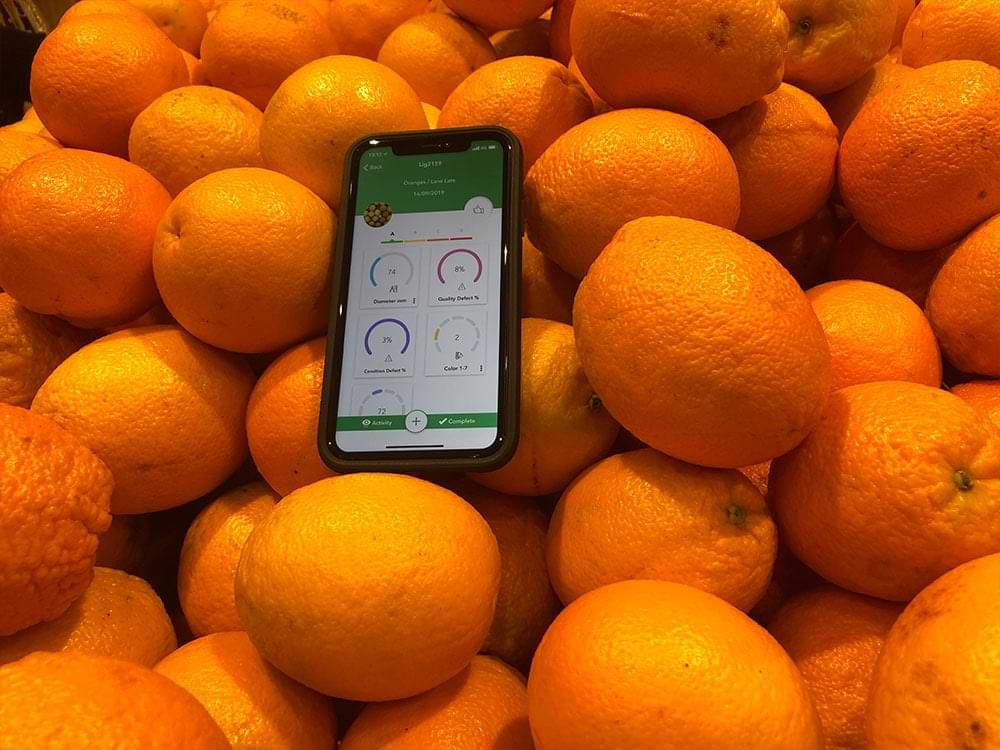
With the time savings, the same person can now handle all three checks, reducing the headcount of your operation while improving the quality of the fresh produce, and freeing up the time of your engineers to focus on higher-value tasks which benefit from that more nuanced judgement.
As the whole process is completely standardized, all QC engineers collect the same data. If an incident occurs, the data is available and complete, so that a clear and thorough incident response process can be put into place to improve processes, without blame.
Step into the future of fresh produce quality control with the Clarifruit platform, and take a load off from your QC engineers for the first time.
